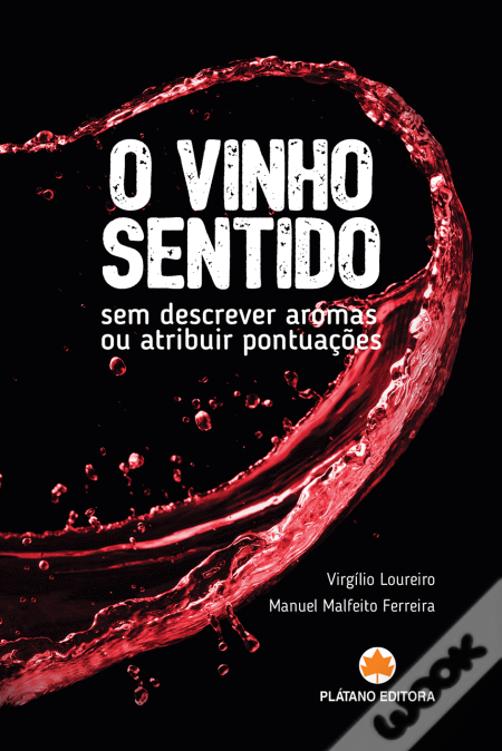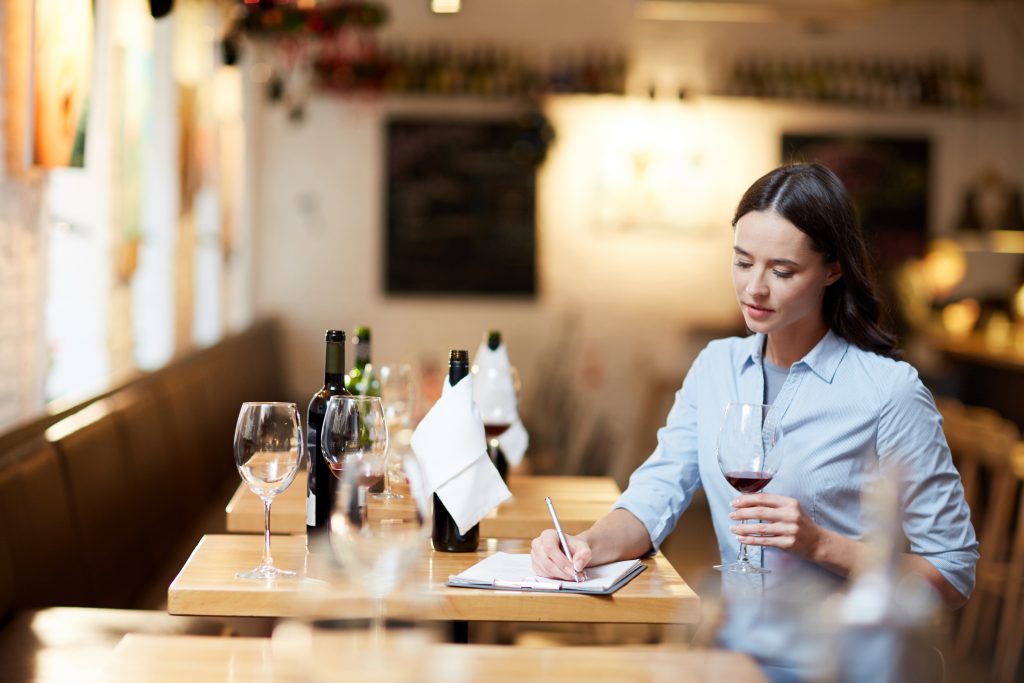The post of this week is a book recommendation “O Vinho Sentido”. Books are very good friends to help us in isolation situations like this one. PLEASE STAY AT HOME.

Motivation
After thirty years of professional, educational and winemaking experience, professors Virgílio Loureiro and Manuel Malfeito Ferreira realized that the conventional tasting method was flawed and that a new approach was necessary. When someone tastes a glass of wine, their first reaction is emotional: “I like it or I do not like it”. From this starting point one can devise a way to understand wine attributes without resorting to elaborate metaphors or grading wine like a school exam.
Authors Virgílio Loureiro and Malfeito Ferreira base their tasting method on knowledge gathered from neurobiology, aroma chemistry, oenology, history, aesthetics, psychology and gastronomy. Wine Sense is written for the beginner, but wine professionals can benefit from learning about an approach to wine tasting that is grounded on the way in which the human brain processes the pleasure of drinking wine.
Summary
The first part of Wine Sense reviews the history of wine tasting since ancient times until present. The authors discuss the technical tasting sheets and how have been adapted by wine journalists. The conventional methods of wine description are explained, and their limitations are presented having in mind the recent advances of neuroscience. The influence of the senses of vision and hearing in wine flavour are described in order to understand how the brain integrates all sensory information and constructs the flavour perception.

The second part proposes a new, more approachable method that uses the emotional responses elicited by different wine styles as the starting point. Taking in consideration two wine standards, one corresponding to the international commercial style, and the other corresponding to the classical European wines, it is possible to make consumers rapidly understand the differences. In fact, the aroma unpleasantness of classical wines is compensated by the positive surprise elicited by the in-mouth sensations.
The final part of the book analyses the evolution of wine preferences, current wine trends and the current manipulation techniques used in wine making to meet consumers’ demands. The wine as an aesthetic object is described through the understanding of their emergent properties. The authors speculate that one of the most difficult tasks in wine tasting is to distinguish wine individual preferences from wine aesthetics attributes. Afterwards, a comprehensive approach to understand and enjoy wine was described and named as Enosophy. The final chapter addresses the question of wine and food pairing.

Contents
PART 1 – Conventional wine tasting and the senses
- The evolution of systematic wine tasting
The pioneers
Lesser known early contributors
Systematic tasting sheets
The scoring methods used by wine magazines - Conventional tasting methods: technique and terminology
Setting up a tasting session
The classic wine tasting technique
The lexicon of sensations
A conventional wine scoring sheet - Wine tasting and sensory analysis
Creating flavour metaphors
The palmy wines
Sensory analysis through wine comparison
Replacing the senses with instruments - Physical and chemical complexity of the wine
Physics and chemistry of appearance
The chemistry of taste and mouthfeel
The chemistry of aroma perception - Wine tasting and the brain
- The tasting brain
How the brain processes information
Vision
Audition
Touch
Taste
Smell
The diversity of sensory responses to stimuli - The integrating brain
The “visual” flavour
The “hearing” flavour
Perceptual flavour learning - The emotional brain
Smell as a sensory emotion
Pleasure and aesthetics
Summary - Final notes
Part 2 – A new wine tasting method: describing and understanding taster emotions
- A new method born out of experience
- Different styles of wine and a measuring scale
- The wine tasting sequence
- Results from the new method
Wine descriptions
How preference evolve over time
Method validation through peer review
The importance of negative emotions
Simplifying the wine tasting sheet
Part 3 – Trends, wine styles and preferences
- Wine throughout the ages
Wine in the Antiquity
Wine in the Middle Ages
The origins of modern trends
The globalization of tastes and scores
The irresistible attraction for smoothness and sweetness - Current trends
Gold-medal wines
Favouring the “strongest” and the “most frequent”
When both ends meet
A way out: repeated exposure or the emotional method - Niche wines
- How to adapt wine to the “global taste”
Manipulating white wine
Red wine to “please the market”
Bottle aging and “adult” white wines
Final issues - When emotion speaks louder than flavours
The halo effect
The usual prejudices
Consumer segmentation
The familiarity effect - Wine as an aesthetic object
Can wine be an aesthetic object?
The emergent qualities
The difficult distinction between aesthetics and preference
By the way, could it be actually quite easy?
Opportunity makes the wine - Wine aesthetics
The sense of place: the Nature aesthetics
Viticulture without terroir
The terroir and harvest time
Our experience with terroir wines
Wine blends: the winemaker aesthetics - Oenosophy: a way to understand wine
A sheet for understanding wine - The harmony of wine and food
Wine-food interactions
Levels of wine and food pairing
An historical overview
Selecting wine for a meal
Pairing wines with Portuguese cuisine
Pairing wines with contemporary cuisine
Epilogue
Appendix 1: Attitudes at wine tasting events
Appendix 2: Tasting exercises
Appendix 3: Selecting wines for a tasting event using the new method
Appendix 4: Wine styles
Bibliography
Alphabetical index
Authors’ Biography
Virgílio Loureiro graduated in agricultural engineering in 1973. In 1984, he completed his PhD in food microbiology at the School of Agriculture of the University of Lisbon where he did research and lectured until his recent retirement. He is a well-known winemaker in Portugal, having completed 52 harvests and contributed to a wider appreciation of Portugal’s unique varietals and wine cultural heritage.
Manuel Malfeito Ferreira first learned about wine in his family’s vineyard and cellar. He graduated with a Ph.D. in food engineering in 1996 under the supervision of Virgílio Loureiro. Ferreira currently lectures on Wine Microbiology and Wine and Gastronomy at the School of Agriculture of the University of Lisbon. He has done research on wine spoilage, microbial ecology and, more recently, on consumer attitudes towards wine and food. He is winemaker in several Portuguese wineries. He is married and has three children.

